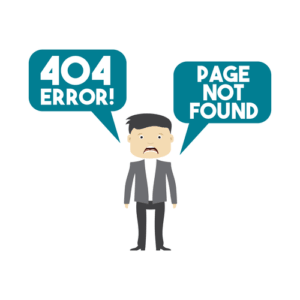Statement of Cash Flows on the Direct Method

Finally, the investing activity and financing activity sections are prepared using the direct method, so it makes intuitive sense that the operating activity section should be prepared on the same basis. Many not-for-profit entities receive donations for which the donor has placed a stipulation that they must be used for long-term nonprofit cash flow statement purposes, such as the purchase of property and equipment or for endowment funds. These cash receipts are to be reported as financing activities in the statement of cash flows.
- This method of calculating cash flow takes more time since you need to track payments and receipts for every cash transaction.
- Remember that the income statement is calculated with the accrual method in mind, and the cash flow statement only looks at cash inflows and outflows.
- While the new standard doesn’t require the indirect reconciliation, it doesn’t prohibit its inclusion, and some users find the indirect method more useful, as it reconciles results in the statement of activities to cash from operating activities.
- Certainly, there are benefits of comparability between years, but like I said, creatures of habit.
- By directly listing cash transactions, the Direct Method offers a more intuitive understanding of an organization’s liquidity—essential for both day-to-day operations and long-term planning.
- You add up these three sections to get your company’s increase or decrease in cash flow.
Take Your CPA Exams with Confidence
It reveals how cash moves in and out of the organization, offering a transparent view of its ability to fund operations, meet obligations, and pursue its mission. For nonprofits, which often depend heavily on cash donations and grants, understanding and managing cash flows is essential to ensure they have the resources needed at the right times. The NFP organization’s governing board now desires a cash flow statement that better informs users where the cash came from and where it went. While simple statements using the direct method allow users to make some reasonable estimates, this is not so easy in an entity with more complex financial statements. The first section of the statement of cash flows consists of operating activities. To prepare this section, you need to start with net income or net loss, which comes from your income statement (statement of activities).
Tips for Managing Cash Flows in Investing Activities
A decrease in a current asset, such as accounts receivable, means that customers paid their bills to you, and you have earned cash. Simply stated, a decrease in accounts receivable means there was an increase in cash, so you add this value back in. Our writing and editorial staff are a team of experts holding advanced financial designations and have written for most major financial media publications. Our work has been directly cited by organizations including Entrepreneur, Business Insider, Investopedia, Forbes, CNBC, and many others. Finance Strategists is a leading financial education organization that connects people with financial professionals, priding itself on providing accurate and reliable financial information to millions of readers each year.

Identifying and Calculating Investing and Financing Activities
When you think of financial statements, the balance sheet or income statement typically come to mind. While these are important components of a nonprofit’s success, the statement of cash flows is critical to understanding the timing and sources of cash moving in and out of your organization. For nonprofit organizations looking to deepen their understanding of financial management practices or seeking guidance on implementing the Direct Method in their cash flow statements, a wealth of resources is available. Below is a list of useful links to further readings, tutorials, and professional guidance that can help strengthen your nonprofit’s financial acumen and reporting capabilities. Now that you understand all that goes into the nonprofit statement of cash flows, it’s time to explore how to use it! The nonprofit statement of cash flows is crucial to understanding your organization’s financial health and decision-making.

Accounting Newbie?
However, it does not measure the efficiency of the business in comparison to a similar industry. For instance, if a company realizes that it will have a cash shortfall in the next month, it can take steps to ensure enough funds are available. The changes in the value of cash balance due to fluctuations in foreign currency exchange rates amount to $143 million.

These activities can provide insights into how the organization is planning for future growth and sustainability through its Accounting Periods and Methods investments in assets. Positive cash flow reveals that more cash is coming into the company than going out. This is a good sign as it tells that the company is able to pay off its debts and obligations. Negative cash flow typically shows that more cash is leaving the company than coming in, which can be a reason for concern as the company may not be able to meet its financial obligations in the future.

Since the accounting records are kept on an accrual basis, it can be a time-consuming and expensive task to separate and collect the cash-only data required for the direct method categories by nature. Also, providing disclosures about sensitive information, Bookstime such as cash receipts from customers and cash payments to suppliers, is not in the best interest of the company. Instead, the indirect method may be easier to prepare because it collects much of its data directly from the existing income statement and balance sheet. However, it is less intuitive as evidenced by the accounts-based categories above. An agency transaction is a type of exchange transaction whereby the not-for-profit entity receives funds that it must pass onto a third party.
- Some contributions designated for growing your nonprofit’s capital may also fall under your cash inflows from financing activities, particularly endowment funds.
- It requires documenting all cash inflows and outflows from core business operations such as income from sales, payments to vendors, and salaries to workers.
- You report operating cash receipts and disbursements to get to the net operating activities.
- This statement is essential for showing how activities related to operating, investing, and financing generate or consume cash.
- This is because gifts of goods, services, and immaterial assets result in a net zero gain in cash for your organization.
- Your nonprofit leverages (or should leverage) a number of financial statements to maintain consistent visibility into the financial health of the organization and to make decisions that will help prevent misallocation.
Do you own a business?
- HighRadius’ Cash Management Solution automates this manual cash-to-bank reconciliation.
- This method provides a clear and detailed view of cash inflows and outflows, which is crucial for nonprofits dependent on timely cash receipts from donations, grants, and fundraising activities.
- Our trained accounting professionals will not only help your organization compile an accurate report, but we’ll also help you interpret the findings from it.
- Through a clear understanding and application of this method, nonprofits can improve their financial management practices, ensuring better informed strategic decisions and continued operational success.
- Third, unlike the direct method, the indirect method can be prepared from virtually any standard chart of accounts.
- Management can use the information in the statement to decide when to invest or pay off debts because it shows how much cash is available at any given time.
- The final step is to add together the total cash flows from operating activities, investing activities, and financing activities.
It enables businesses to reconcile the prior day’s planned cash transactions vs bank transactions at the click of a button. It also identifies discrepancies between actuals vs expected and handles unmatched bank transactions or cash transactions using an easy-to-use interface. Most businesses are still dependent on Excel for cash flow analysis, with limited scalability. Due to the lack of automation and robust tracking mechanisms, treasury professionals often spend considerable time tracking cash transactions. They do so by manually reconciling the expected cash transactions with the bank statements, which often leads to inaccurate results, a lack of cash visibility, and decreased productivity. Financing activities for a nonprofit involve the flows of cash that affect the size and composition of the net assets or equity of the organization.
